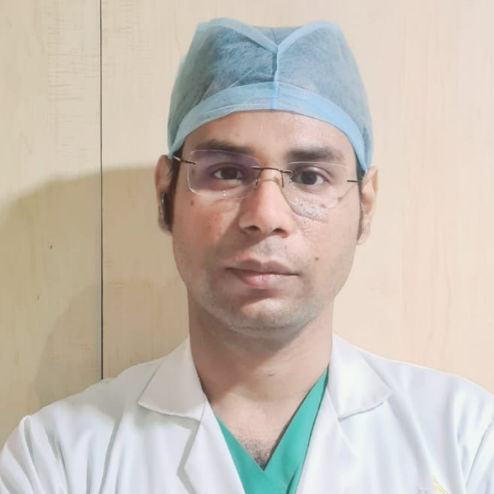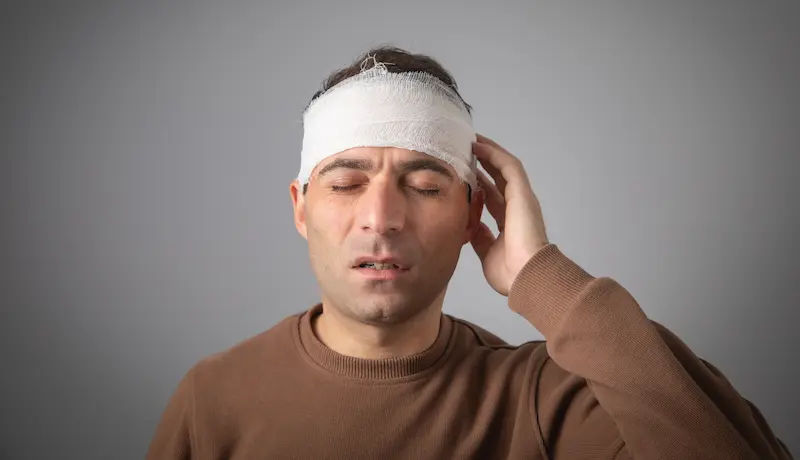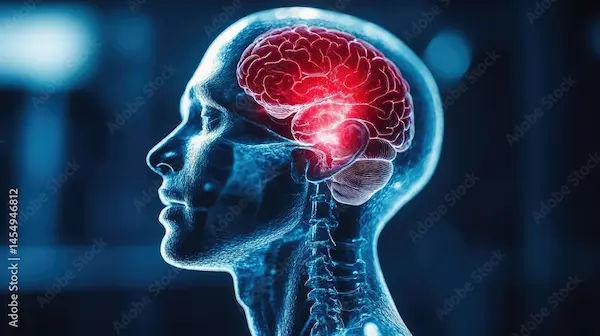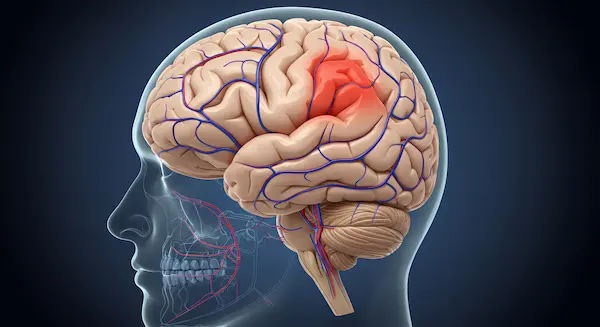Guide to Mysteries Of Brain
Delve into the complex mysteries of the human brain. Explore topics like consciousness, memory formation, brain plasticity, and current neurological research that seeks to unlock the secrets of cognition.

Written by Dr. Dhankecha Mayank Dineshbhai
Reviewed by Dr. Vasanthasree Nair MBBS
Last updated on 24th Oct, 2025

Introduction
Your brain is the most complex organ you own—an electrified network of roughly 86 billion neurons making sense of the world, guiding your choices, and storing your life’s story. And yet, many of the brain’s biggest mysteries remain unsolved: Why do we dream? How does consciousness arise? Why does stress hijack our thinking? In this practical guide to the mysteries of the brain, we’ll explore what scientists know, what they don’t, and—most importantly—what you can do every day to protect and improve your brain health.
You’ll learn how memory is built and why forgetting is necessary, how sleep “cleans” the brain, the surprising ways your gut talks to your head, and how emotions and stress shape decisions. We’ll separate myths from facts, share simple habits with outsized impact, and show you when symptoms deserve a doctor’s attention. Along the way, we’ll stay grounded in research while keeping the conversation friendly and actionable—because understanding the brain shouldn’t be a mystery reserved for scientists.
Brain Basics: A Map to Our Most Mysterious Organ
The brain’s architecture is a city of cells. Neurons transmit signals using electrical spikes and chemical messengers (neurotransmitters). Glial cells—astrocytes, oligodendrocytes, and microglia—aren’t just “support”; they regulate neurotransmitters, myelinate axons to speed signals, and maintain immune surveillance. On average, adult human brains contain about 86 billion neurons and at least as many glia, with roughly trillions of synapses adapting from minute to minute as you learn.
Despite weighing about 2% of your body mass, the brain consumes about 20% of your resting energy, largely to maintain ionic gradients and synaptic activity. That energy hunger is why regular meals, quality sleep, and movement affect mental clarity.
Two persistent myths deserve clearing. First, “we use only 10% of our brain” is false; imaging shows widespread brain involvement even during simple tasks, and “unused” tissue would rapidly be repurposed or pruned. Second, the “left brain logical/right brain creative” idea is oversimplified; while some functions lateralize, creativity and reasoning emerge from distributed networks interacting across both hemispheres.
Modern efforts like the NIH BRAIN Initiative aim to map circuits, develop tools for cell-specific recording, and decode neural codes that underlie perception and behavior. What this means for you: even before every mystery is solved, habits that stabilize those circuits: sleep, nutrition, movement, social connection—are the foundation of brain health. Unique insight: Think in “circuits,” not “chemicals.” It’s tempting to blame one neurotransmitter for how you feel, but it’s the timing and coordination of entire networks that shape mood, focus, and resilience.
Consult a Top Neurologist for personalised advice
Memory, Learning, and Forgetting: What Science Knows (and Doesn’t)
Memory isn’t stored in one spot like files on a hard drive. Short-term and working memory rely on fronto-parietal networks, while the hippocampus is critical for forming long-term episodic memories. Classic cases like patient H.M., who lost the ability to form new memories after hippocampal surgery, revealed just how central this structure is to consolidation [7]. Modern studies show “engrams”—distributed neuron ensembles—reactivating during recall, suggesting memories are patterns across networks, not singular imprints.
Forgetting is a feature. The brain constantly prunes synapses to strengthen useful connections and reduce noise, which enhances learning efficiency. Sleep is integral here: deep sleep supports consolidation; REM sleep may integrate emotional tone and abstract associations. Studying spaced over days (“spaced repetition”) taps the brain’s natural consolidation rhythms.
When brain fog isn’t normal: Reversible causes include poor sleep, stress, dehydration, low B12, thyroid dysfunction, iron deficiency, and unmanaged blood sugar. If concentration or memory problems persist beyond two weeks despite basics (sleep, hydration, balanced meals), consult a doctor online with Apollo 24|7 for evaluation. When relevant, Apollo 24|7 offers a convenient home collection for tests like vitamin B12, thyroid panel, vitamin D, and HbA1c.
- Two practical upgrades:
- ce for priority storage.
Unique insight: Emotional labeling (“I feel anxious about this test”) can prevent negative emotion from “binding” to neutral content, improving recall accuracy.
Sleep, Dreams, and the Brain’s Night Shift
Sleep is not downtime—it’s when essential brain maintenance happens. During deep, slow-wave sleep, cerebrospinal fluid pulses through brain tissue in a “glymphatic” flow that clears metabolic byproducts, including beta-amyloid associated with Alzheimer’s disease [8]. Studies suggest this clearance is more effective during sleep than wakefulness, reinforcing why consistent sleep supports long-term brain health.
Dreams remain mysterious. Competing theories say dreams help process emotions, rehearse threats, or integrate new information with existing schemas. Whether or not a single theory wins, sleep deprivation reliably impairs attention, learning, and mood, and increases pain sensitivity.
Sleep hygiene that actually helps:
- Anchor wake time: A consistent wake-up time stabilizes your circadian rhythm more than a rigid bedtime.
- Morning light, evening dim: 10–30 minutes of morning daylight helps set your body clock; dim lights and screens in the evening reduce melatonin suppression.
- Wind-down routine: Gentle stretching, a warm shower, and journaling reduce pre-sleep arousal.
- Caffeine and alcohol timing: Avoid caffeine within 8 hours of bed; alcohol can fragment sleep later in the night.
If insomnia or loud snoring with daytime sleepiness persists beyond two weeks, consult a doctor with Apollo 24|7; sleep apnea screening may be appropriate. Unique insight: Treat your bedroom like a “sleep cue.” A cool, dark, quiet space plus a consistent pre-sleep ritual trains your brain to associate the environment with sleep, making it easier to drift off over time.
Emotions, Stress, and Resilience
Emotions are not “irrational glitches”—they’re rapid whole-brain appraisals of what matters for survival and social connection. The amygdala helps detect salience and potential threats; the prefrontal cortex (PFC) evaluates context and regulates responses. In prolonged stress, cortisol can disrupt hippocampal function, affecting memory and increasing anxiety; chronic stress also influences inflammation pathways linked to low mood [9].
Three evidence-based micro-habits:
30-minute brisk walking 3–5 times weekly increases brain-derived neurotrophic factor (BDNF), supporting plasticity and mood regulation. In older adults, walking has been associated with increased hippocampal volume over a year [10].
- Box breathing (4-4-4-4): A few minutes can calm autonomic arousal, restoring PFC control.
Label to enable: Briefly naming your feelings recruits prefrontal regions, dampening amygdala reactivity (“affect labeling”). - When to seek help: If persistent low mood, anhedonia, or anxiety interferes with work, sleep, or relationships for two weeks or more, consult a doctor online with Apollo 24|7 for assessment. Early support improves outcomes.
- Unique insight: Think “stress budget.” Just as you plan finances, plan recovery (sleep, social time, nature, creative play) proportional to your stress load. The brain adapts to patterns—making recovery a patterned habit.
The Gut-Brain Axis and Hormonal Signals
Your gut talks to your brain through the vagus nerve, hormones, immune signals, and metabolites produced by gut microbes. Short-chain fatty acids (like butyrate) can influence inflammation and, indirectly, brain function. Reviews suggest bidirectional links between the microbiome and mood, though high-quality randomized trials are still catching up. Translation: fiber-rich whole foods feed diverse microbes, and diversity correlates with resilience.
Food, mood, and focus:
- - Pattern over single “superfoods”: Mediterranean-style patterns—vegetables, fruits, legumes, whole grains, nuts, olive oil, fish—are linked with better cognitive aging and mood.
- - Protein rhythm: Include protein at breakfast to support steady focus.
- - Fermented foods and fiber: Small trials show fermented foods may increase microbial diversity; go slow if you’re sensitive.
Hormonal signals also matter. Thyroid, insulin, and sex hormones (estrogen, progesterone, testosterone) influence brain function; perimenopause and menopause can bring brain fog and sleep disruption. If symptoms are significant, discuss options (including hormone therapy appropriateness) with a clinician. Apollo 24|7 offers home collection for thyroid and metabolic tests if needed.
Unique insight: “Feed your microbes, feed your mind.” Track your energy and mood for 7 days as you increase fiber by 5–10 g/day with legumes and vegetables. Many people report steadier focus and fewer mid-afternoon crashes within two weeks.
Pain, Placebo, and Perception
Pain is a protective perception, not a direct meter of tissue damage. Brain imaging shows that context, expectations, emotions, and attention shape pain intensity via top-down modulation. Placebo responses—real reductions in pain from expectations and therapeutic context—are robust and linked to endogenous opioid and dopamine systems; nocebo responses can worsen symptoms when we anticipate harm [12].
What helps:
- - Reframe: Replace “my back is damaged” with “my back is sensitized but adaptable.” Reduces fear and improves movement confidence.
- - Mindfulness and graded exposure: Calm the alarm system, then gradually reintroduce feared movements; this can recalibrate the nervous system.
- - Sleep and movement: Both downregulate pain pathways and improve resilience.
When to seek care: Red-flag symptoms like sudden severe headache, weakness, numbness, loss of bladder/bowel control, high fever with neck stiffness, or head injury demand urgent evaluation. For persistent pain affecting function, consult a clinician with Apollo 24|7 for a tailored plan.
Unique insight: Combine “contextual medicine” with biomechanics. The story you tell yourself and the environment you recover in can change your pain circuitry—use both to your advantage.
Aging, Neuroplasticity, and Cognitive Reserve
Neuroplasticity—your brain’s ability to change structure and function—continues across the lifespan. London taxi drivers with intensive spatial navigation training show larger posterior hippocampi, evidence that experience remodels brain regions [13]. Cognitive reserve—built through education, bilingualism, complex work, and social engagement—appears to delay the clinical onset of dementia even when brain pathology is present.
Dementia risk reduction is real. The Lancet Commission highlights modifiable risks: hypertension, diabetes, hearing loss, smoking, physical inactivity, depression, social isolation, excessive alcohol, traumatic brain injury, and air pollution [6]. Addressing midlife hearing loss (with screening and hearing aids when indicated) is among the highest-impact actions.
Daily practice for plasticity:
- - Move most days: Aerobic plus balance and strength.
- - Learn something effortful: A new language, instrument, or dance style—effort and novelty drive change.
- - Protect your senses: Use hearing protection; get vision corrected; treat sleep apnea.
- - Connect: Regular, meaningful social contact buffers decline.
If you or a loved one notices progressive memory loss, disorientation, or personality change, book a consultation with Apollo 24|7 for evaluation. Lab screens (B12, thyroid, syphilis, HIV when indicated), neurocognitive testing, and imaging may be considered. Apollo 24|7 offers home collection for key labs.
Unique insight: “Stack novelty.” Pair a new skill with a social setting and movement (e.g., join a beginner dance class). Triple activation—motor, cognitive, social—may amplify plasticity benefits.
Consciousness, Creativity, and Time
Consciousness—the feeling of “being you”—is linked to large-scale brain networks, including the default mode network (self-related processing) and fronto-parietal control networks (attention, cognitive control). Under anesthesia, connectivity within and between these networks degrades; when it recovers, conscious awareness returns—a tantalizing clue but not a full explanation.
Creativity thrives in dynamic balance: focused attention to gather and refine ideas, and diffuse attention (mind-wandering) to spark novel combinations. Practices that increase “associative distance” (exposing yourself to unrelated domains) can boost creative output. Time perception is similarly flexible: novelty, attention, and arousal can dilate or compress felt time—why vacations feel long in memory but short in the moment.
Practical take:
- - Alternate modes: Use 45 minutes of deep work followed by 10–15 minutes of unfocused activity (walks, light chores) to encourage incubation.
- - Seek cross-pollination: Read outside your field; talk to people with different backgrounds.
- - Protect solitude and sleep: Insights often surface after rest.
Unique insight: Treat boredom as a brain tool. Short, intentional “boredom windows” (no phone, no input) create mental space your brain uses to reorganize and connect ideas.
Consult a Top Neurologist
Conclusion
The brain remains humanity’s greatest mystery, but you don’t need every answer to take care of it today. Think in systems: sleep sets the stage for memory, mood, and pain control; movement and daylight recalibrate your rhythms and grow plasticity; nourishing foods and social connection support the gut-brain-immune network; and small stress-management rituals keep your prefrontal cortex in the driver’s seat.
Use this guide as a practical template. Anchor your wake time. Step outside each morning. Eat mostly plants, fiber, and healthy fats. Walk most days and lift something a couple of times a week. Learn something new and share it with someone you like. Protect your hearing and sleep. And remember: setbacks are part of how the brain learns—keep the pattern, not perfection.
If you notice persistent brain fog, memory changes, low mood, poor sleep, or pain that limits life for more than two weeks, consult a doctor online with Apollo 24|7 for tailored guidance. When lab tests are relevant, Apollo 24|7 offers a convenient home collection for checks like vitamin B12, thyroid, vitamin D, and HbA1c. The brain is adaptable at every age; the earlier you support it, the stronger it becomes. Your daily choices are the most powerful levers you control—start small, start today, and let your brain’s natural plasticity work for you.
Consult a Top Neurologist

Dr. Aditendraditya Singh Bhati
Neurosurgeon
21 Years • MBBS(2004), DNB Neurosurgery(2014); MNAMS; Fellow Skull Base Endoscopy (Italy), Fellow Extended Skull Base ( Weill Cornell, USA), Fellow ZAP-X Radiosurgery. Member of American Association of Neurological Surgeons
Delhi
Apollo Hospitals Indraprastha, Delhi
(100+ Patients)

Dr. Ganeshgouda Majigoudra
Neurologist
10 Years • MBBS, MD ( GENERAL MEDICINE) DM (NEUROLOGY)
Bengaluru
Apollo Clinic, JP nagar, Bengaluru

Dr. E Prabhakar Sastry
General Physician/ Internal Medicine Specialist
40 Years • MD(Internal Medicine)
Manikonda Jagir
Apollo Clinic, Manikonda, Manikonda Jagir
(150+ Patients)

Dr Rajashekar Mummadi
Neurologist
3 Years • MBBS, DNB General Medicine, DRNB Neurology
Hyderabad
Dr Ram's Neuro Clinic, Hyderabad

Dr Debnath Dwaipayan
Neurosurgeon
9 Years • MBBS, MS(Gen. Surgery), DrNB (Neurosurgery)
Delhi
Apollo Hospitals Indraprastha, Delhi
Consult a Top Neurologist for personalised advice

Dr. Aditendraditya Singh Bhati
Neurosurgeon
21 Years • MBBS(2004), DNB Neurosurgery(2014); MNAMS; Fellow Skull Base Endoscopy (Italy), Fellow Extended Skull Base ( Weill Cornell, USA), Fellow ZAP-X Radiosurgery. Member of American Association of Neurological Surgeons
Delhi
Apollo Hospitals Indraprastha, Delhi
(100+ Patients)

Dr. Ganeshgouda Majigoudra
Neurologist
10 Years • MBBS, MD ( GENERAL MEDICINE) DM (NEUROLOGY)
Bengaluru
Apollo Clinic, JP nagar, Bengaluru

Dr. E Prabhakar Sastry
General Physician/ Internal Medicine Specialist
40 Years • MD(Internal Medicine)
Manikonda Jagir
Apollo Clinic, Manikonda, Manikonda Jagir
(150+ Patients)

Dr Rajashekar Mummadi
Neurologist
3 Years • MBBS, DNB General Medicine, DRNB Neurology
Hyderabad
Dr Ram's Neuro Clinic, Hyderabad

Dr Debnath Dwaipayan
Neurosurgeon
9 Years • MBBS, MS(Gen. Surgery), DrNB (Neurosurgery)
Delhi
Apollo Hospitals Indraprastha, Delhi
More articles from Brain Injury
Frequently Asked Questions
What’s the best way to improve memory fast?
Use retrieval practice and spaced repetition instead of re-reading. Combine with 7–9 hours of sleep and a protein-rich breakfast. If brain fog persists, get screened for reversible causes like thyroid or B12 with a doctor via Apollo 24|7.
How does the gut-brain axis affect mood?
Gut microbes produce metabolites and signal via the vagus nerve, hormones, and immune pathways, influencing inflammation and neurotransmission. A Mediterranean-style diet and more fiber can support a healthier gut-brain axis.
Are we really using only 10% of our brain?
No—that’s a myth. Even simple tasks activate widespread networks. Brain efficiency is about coordinated circuits, not unused space.
Can I build cognitive reserves later in life?
Yes. Neuroplasticity exercises for adults—learning new skills, regular aerobic activity, and social engagement—can strengthen networks and may delay clinical signs of cognitive decline.
What are early signs of dementia vs. normal aging?
Concerning signs include progressive memory loss affecting daily function, repeated questions, getting lost in familiar places, and personality changes. Normal aging often involves slower recall but intact function. If concerned, consult a doctor with Apollo 24|7 for evaluation; key labs can be collected at home.




